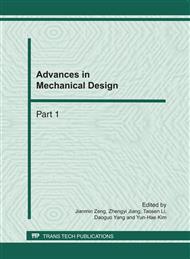p.1158
p.1165
p.1171
p.1175
p.1180
p.1185
p.1192
p.1196
p.1200
Study on Multi-Objective Optimization Design of Planetary Gear Reducer
Abstract:
Various elements in planetary gear reducer design are discussed. A multi-objective optimization model is created. The model requires the minimum volume and the maximum contact ratio. The method of multiplication and division is used to solve the multi-objective problem, and the method of feasibility enumeration is used to handle the discrete variables. The results show that the optimal solution meets the actual requirements.
Info:
Periodical:
Pages:
1180-1184
Citation:
Online since:
February 2011
Authors:
Price:
Сopyright:
© 2011 Trans Tech Publications Ltd. All Rights Reserved
Share:
Citation:


